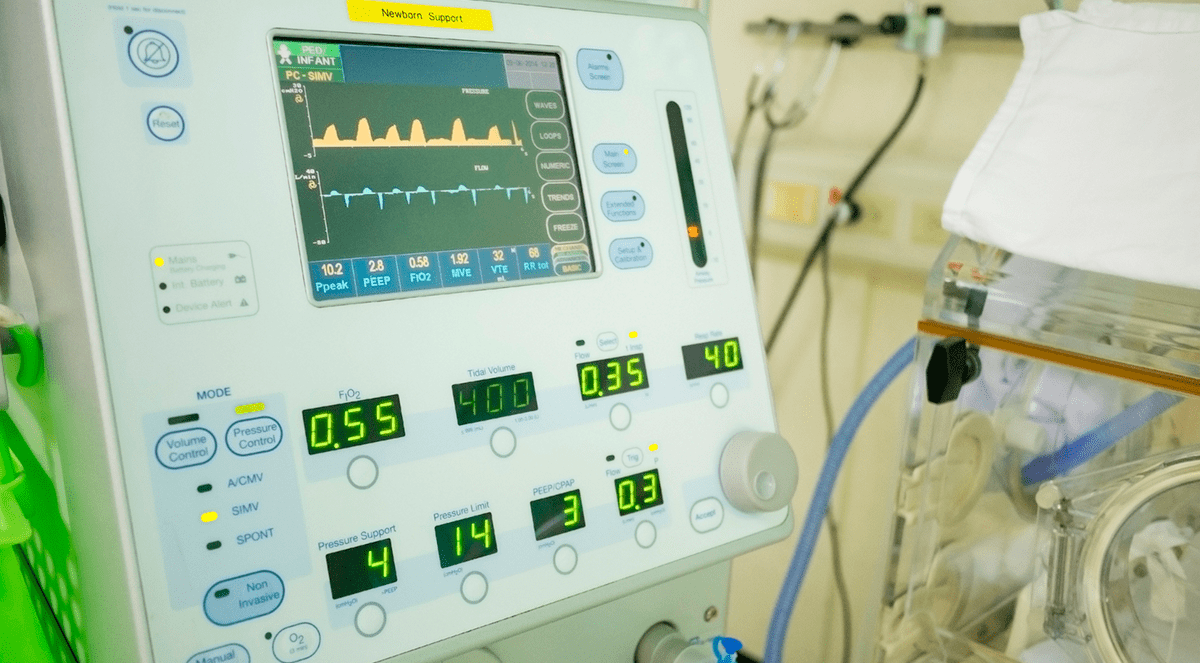Clinically significant adverse events associated with procedural sedation and analgesia (PSA)—including critical oxygen desaturation, bradycardia, hypotension and cardiac arrest—are relatively uncommon. However, their occasional occurrence should be recognized as integral risks of administering PSA that can be accompanied by severe morbidity or mortality. Most cardiopulmonary events associated with PSA are the result of inadequate ventilation cascading into hypoxia, tissue injury, and cardiac decompensation. This physiological cascade of worsening health status in patients begins with respiratory compromise (RC), a potentially progressive condition that negatively impacts patient ventilatory function and comprises respiratory insufficiency, failure, and arrest.
Maintaining patient safety requires monitoring to identify RC promptly and allow interventions that can prevent adverse outcomes. Patient monitoring for RC during PSA typically relies on visual assessment of ventilation and the use of pulse oximetry to identify hypoxemia. As an additional monitoring technology, capnography can be used to measure the partial pressure of carbon dioxide (CO2) in expiratory respiratory gases (end-tidal CO2) and detect increasing levels of CO2. Capnography provides an earlier marker of hypoventilation and impending respiratory compromise, earlier than pulse oximetry can detect hypoxemia.
A Rigorous Meta-Analysis
Although the patient safety benefits of capnography monitoring have been noted in prior research, the results of individual studies on its impact on RC during PSA have not been consistent. Furthermore, the results of two previous meta-analyses are conflicting, due to heterogeneity and nonstandard endpoints across the included studies. For a more recent meta-analysis, published in BMJ Open, my colleagues and I placed particular emphasis on maintaining a consistent definition of adverse events across all included studies and used rigorous statistical methodologies to minimize the use of nonstandard endpoints. The use of statistically powerful meta-analyses that pool data across studies to investigate whether capnography can improve patient safety during PSA is particularly important as the potential to conduct a definitive RCT is assumed to be limited by the enormous sample size that would be required. Indeed, our power analyses suggest a well-designed RCT to demonstrate the benefits of capnography in reducing mortality and severe morbidity during PSA would require more than 27,000 patients. Our meta-analysis addressed methodologic problems associated with the two prior attempts, and specifically sought to assess the benefits of capnography in reducing clinically significant RC during PSA.
We used rigorous systematic methodologies to conduct a review of the literature and identify high-quality randomized controlled trials published between 2006 and 2016. Our final meta-analysis included 13 studies and 5,475 patients undergoing a variety of ambulatory surgical procedures and determined whether the addition of capnography—as a means of early detection of alveolar hypoventilation—reduced the incidence of adverse events during PSA. Our primary endpoint was desaturation/hypoxemia (with severe desaturation defined as SpO2 ≤85%); additional endpoints included apnea, aspiration, bradycardia, hypotension, premature procedure termination, respiratory failure, use of assisted/bag-mask ventilation, and death.
Significant Findings
The results of our comprehensive meta-analysis provide clear and consistent evidence of decreased respiratory compromise when capnography monitoring is added to visual assessment of ventilation and pulse oximetry during PSA. Our analysis identified a statistically significant and clinically meaningful reduction in mild and severe oxygen desaturation and also in the need for assisted ventilation. Specifically, our meta-analysis showed that capnography monitoring significantly reduced the odds of mild (risk ratio [RR], 0.77) and severe (RR, 0.59) oxygen desaturation, as well as the odds of respiratory failure events (OR, 0.47; Table). Stated another way, the odds of a severe desaturation event and of requiring bag-mask ventilation during PSA were each reduced by more than 50% when capnography monitoring was employed, compared with the use of visual assessment and pulse oximetry only.
Importance in Clinical Practice
Physician concerns for patient safety often focus on late outcomes of mortality and severe morbidity. For healthcare providers, the most significant finding of our meta-analysis is the consistency of data showing a reduction in all levels of respiratory compromise when capnography is used to monitor patients during PSA. Detection of respiratory compromise by capnography during PSA allows clinical intervention earlier than standard methods of visual assessment and pulse oximetry. Ultimately, our meta-analysis supports the use of capnography monitoring during PSA as a useful technology for patient monitoring. The clinical implications also further support current guidelines or recommendations to include capnography as a valuable tool for improving patient safety.



 PWeekly
PWeekly